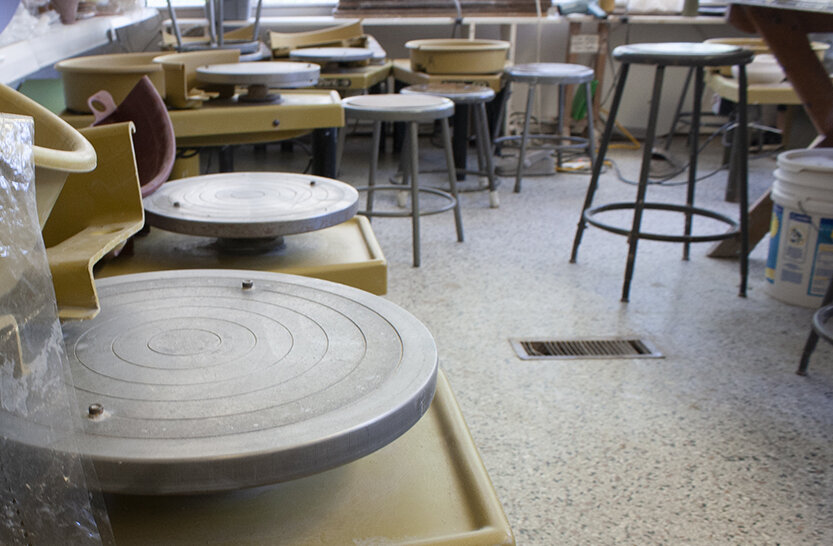Hidden amidst all of the chaos, there stands the art, statues and sculptures that scatter our campus. These seemingly random and often unnoticed figures each have a purpose and a story of their own.
“Walking around campus is more than just getting from one place to another. Sometimes stop and there (can be) surprises there,” said Muriel “Mickey” Scheinman, a retired University professor and author of “A Guide to Art at the University of Illinois.”
If you are wise enough to follow Scheinman’s advice and take the time to observe the statues and figures on campus, you might begin to wonder how these works of art got there and what they represent.
*1. Alma Mater*
The Alma Mater is one of the most well known figures on the University’s campus. Made by Lorado Taft, University alumnus, the statue was gifted to the University on Alumni Day in 1929. Located on the southeast corner of Wright and Green streets, the statue depicts the University’s motto.
Get The Daily Illini in your inbox!
“(The statue presents) two figurines of labor and learning with scholarship in between them,” said Kalev Leetaru, University alumnus whose senior thesis focused on the history of many University’s landmarks.
Although the Alma Mater has welcomed thousands of students and visitors throughout the years, few know its original home was behind Foellinger Auditorium until 1962.
“It’s the symbol of the University. It graces the entrance to campus,” she said. “It’s the site where people come with their families …. It’s sweet.”
*2. Sons and Daughters of Deucalion and Pyrrha*
Located outside of the main library and Foellinger Auditorium, these four statues were carved by Walter Zimmerman under the instruction of Taft. The two women and two men, made of limestone, were created in 1933 for the Century of Progress Exposition in Chicago.
“They were not designed specifically for this campus,” said Melvyn A. Skvarla, campus historic preservation officer. “They were part of Lorado Taft’s estate, and when he died in 1937, the University purchased (the) estate and the pieces of sculpture became property of the University.”
Although these figures are a part of an institution of higher learning, they are not immune to error — as displayed in the typo on the sculpture’s plaque.
*3. Upwells*
If you have class on the Engineering Quad, you probably have wondered what this particular figure represents. In 1990, Stephen Luecking sculpted Upwells, which is currently located just south of the Beckman Institute. Unlike the Sons & Daughters and the Alma Mater, Upwells was specifically made for this campus.
According to Skvarla, Upwells was constructed in order to abide by Illinois state law. Since 1972, the law has required that 0.5 percent of a building’s project budget must be devoted to art by a living Illinois artist.
Also, according to Scheinman’s book, the length of the shadow that the tall spire casts can be used to analyze the sun’s position at different times of the year.
Upwells also lines up directly with the Beckman Institute and the Main Quad, which symbolizes the connection between two prominent parts of campus.
“The Main Quad is a strong feature of our campus…they want to relate that with the Engineering Quad,” Skvarla said.
*4. Tree of Life Fantasy*
At first glace, this sculpture seems to be either an abstract playground or a robotic machine. However, art is supposed to spark questions, and questions are exactly what you’ll have after witnessing the Tree of Life Fantasy outside the Education Building.
“From it’s delicacy there is a certain fragility about it,” Skvarla said.
Alice Aycock, who crafted this figure, gave it to the University in 1992.
“There isn’t always necessarily a specific meaning for a piece of sculpture,” Skvarla said. “It doesn’t have to be representational — it can be very abstract.”









